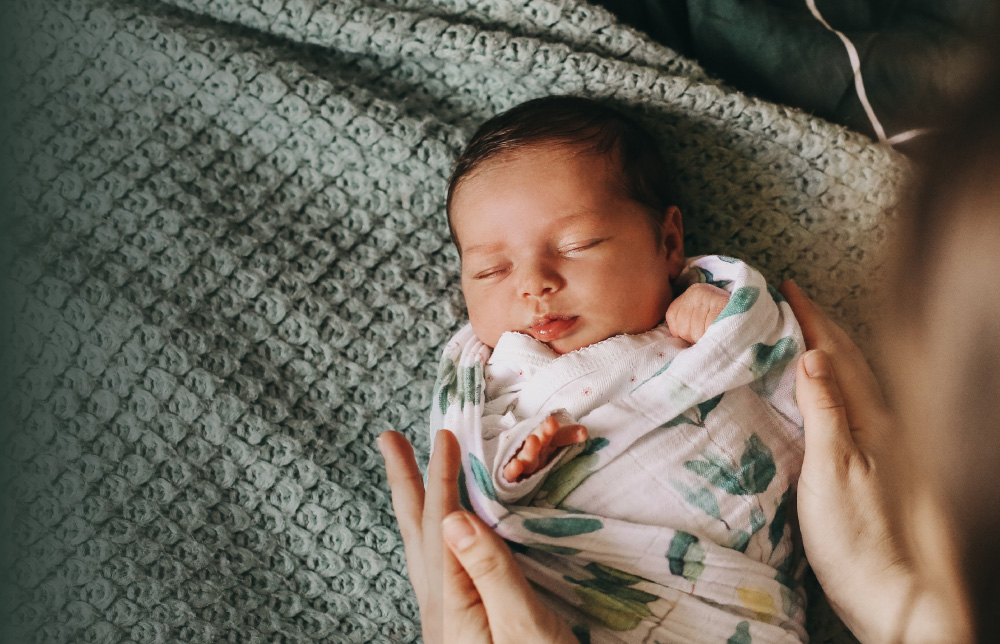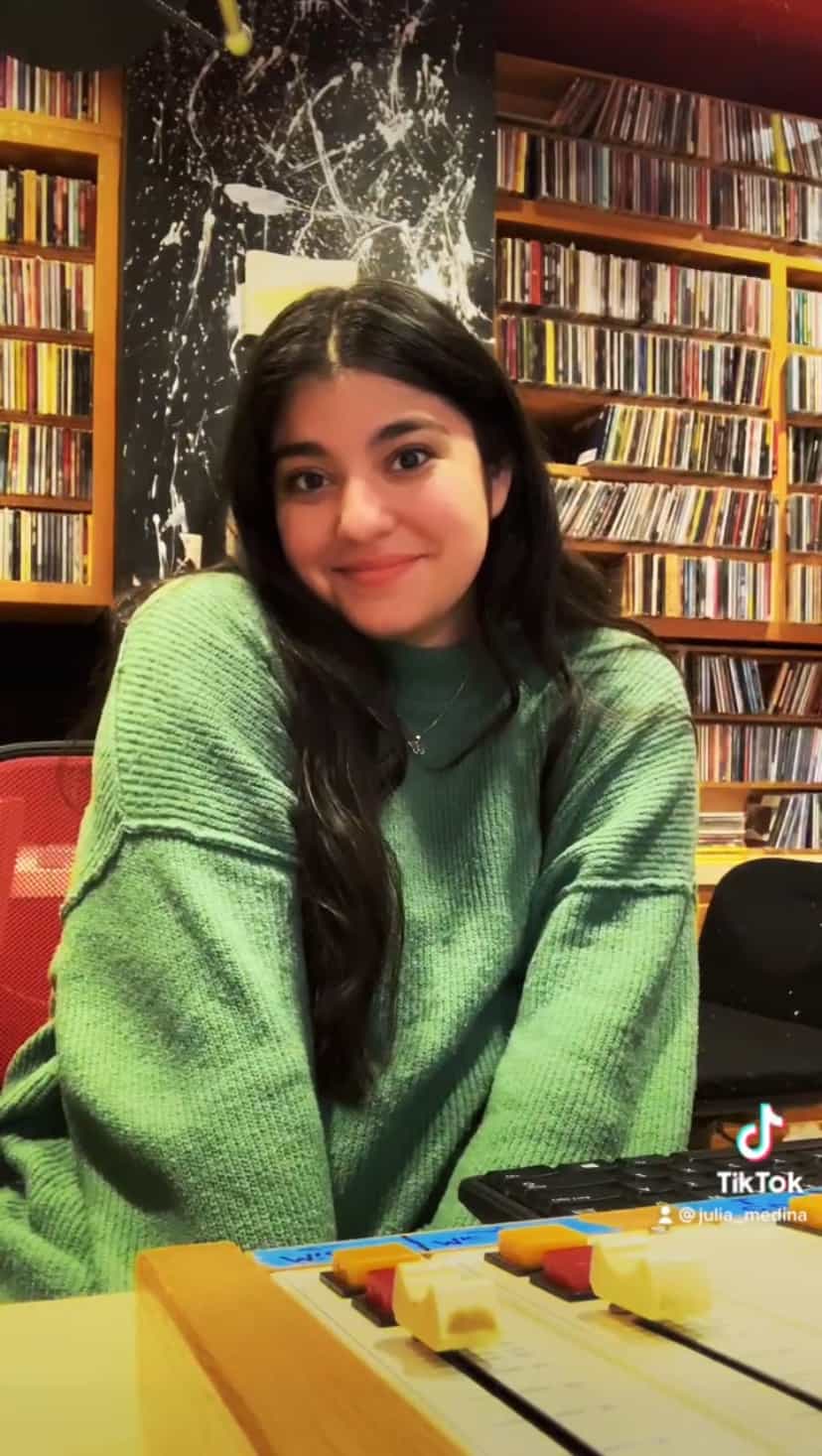
You’re probably familiar with the weighted blanket trend, which took the internet by storm a few years ago and hasn’t stopped growing.
In fact, the weighted blanket market has grown significantly in the past three years. According to a Business Research Insights report, the weighted blanket market was valued at $399 million in 2019 and is projected to reach $1.2 billion by 2026. GLIMPSE, a trend analysis company, reports that interest in the term “weighted stuffed animals” has grown 595 percent over the past year. No doubt about it – people are obsessed with weighted sleep products.
The newest one to gain popularity? Weighted baby sleep sacks, which have experts and parents alike talking. Google Trends reports that searches for the term peaked in November of 2022, and according to Exploding Topics, a service that analyzes Google Trends, searches for the term “weighted sleep sack” have overall grown by 41 percent in the past year, currently getting around 12.2K searches per month.
However, there’s one question consumers have top of mind: Are weighted sleep sacks for babies safe? The answer, like most answers revolving around baby sleep issues, is a little complicated, but here’s what the experts say.
What Is a Weighted Baby Sleep Sack?
A weighted baby sleep sack is basically what it sounds like: a weighted garment that your baby can, in theory, sleep in. There are a couple different types, with the extra weight distribution either being dispersed over the entire garment or just on your baby’s chest.
They generally use the same kind of deep pressure stimulation that other weighted blankets use, which may boost serotonin levels, reduce anxiety, and help you sleep better. That said, there’s not a lot of research on weighted baby sleep sacks specifically, so it’s hard to say if they actually work.
Non-weighted sleep sacks are also popular – similar to their weighted counterparts, they’re designed to soothe your baby and help them fall asleep, but they don’t include any weighted components.
Why Are Weighted Sleep Sacks So Popular?
If you’re a parent, you’re likely familiar with the 3 a.m. wake-ups and seemingly endless sleepless nights that come with having a newborn. No doubt about it – that first year with a new baby will almost certainly have its difficult sleep-related moments, especially for first-time parents. Both you and your baby are getting used to each other and adapting to a brand-new life and routine (no wonder you both might feel like crying!).
One of the most popular models, the Dreamland Weighted Sleep Sack, was founded by fourth-time mom Tara Williams, whose baby was struggling to sleep. On a 2020 episode of Shark Tank, Williams said that at the six-month mark, her son, Luke, was still waking up every hour and a half. “When I say nobody was sleeping, I mean nobody,” she said.
That experience led her to create Dreamland in 2019. “The first time our son wore his Dreamland baby, he went from waking up every hour and a half to sleeping 12 hours,” Williams said on Shark Tank.
Since then, the Dreamland weighted sleep sack has shot up in popularity – it’s received more than 1,500 Amazon reviews (and has a 4.5/5 star rating), and in 2021, the brand announced that it had officially done $10 million in revenue.
“We consulted with pediatricians, NICU nurses, and certified sleep experts, reviewed by pulmonologists while developing our products to ensure that the added gentle weight is less than 10% of the babies’ body weight- similar to the feeling of a hug,” a rep for Dreamland told Sleepopolis.
What makes their product different from others? According to Dreamland, their product is unique because the weight is evenly distributed across the front of the sleep sack to ensure the weight isn’t concentrated in one area. The weight in the sleep sack doesn’t limit a baby’s movement, stating, “they can do anything in our sleep sack that they can do on a non-weighted sack — sit, stand, rollover.”
When asked about safety concerns around their product, Dreamland’s rep stated they have sold over half a million sleep sacks with zero adverse events. Currently the company’s CEO and founder is the co-chairman of an American Society of Testing and Materials (ASTM) subcommittee to create universal standards for weighted and non-weighted wearable blankets.
So, Wait, Why Are Weighted Sleep Sacks Bad for My Baby?
The American Academy of Pediatrics (AAP) tells Sleepopolis they do not recommend using these products and they are considered unsafe to use. Weighted products, including weighted swaddles and blankets, can potentially place too much pressure on a baby’s chest and lungs.
While weighted blankets are safe for adults, this doesn’t translate to safety when it comes to weighted products for kids. Babies are at risk for suffocation and overheating when using these products, according to the AAP.
Dr. Bidisha Sarkar, a pediatrician with expertise in newborn care, explained to Sleepopolis that, while the idea behind these products is good, the danger comes when they are used incorrectly. “The most common concern is that weighted sleep sacks can pose a suffocation hazard if babies roll onto their stomachs while wearing them,” Sarkar elaborates.
Since weighted sleep sacks are a newer product, there is limited research. A study often referenced to explain why weighted sleep sacks are safe uses weighted blankets on infants in the NICU.
The study had 16 participants, infants diagnosed with neonatal abstinence syndrome (NAS), undergoing 30 minute sessions using weighted or non weighted blankets. No adverse events were observed while using the weighted blankets. While the results of this study found positive reasons to continue using weighted blankets for NAS infants in the NICU, this is a very specific use for this product. The environment while using the weighted blankets is completely different than at home.
What About Non-Weighted Sleep Sacks?
While the AAP doesn’t have guidelines against using non-weighted sleep sacks, they do recommend you supervise your baby while using them.
Sleep sacks are often used as your baby begins to transition out of using swaddles. Once your baby is able to roll themselves over, the sleep sack allows them to use their hands to roll themselves back over.
Dr. Sarker explains that non-weighted sleep sacks are generally safe to use for babies 12 months or older.
“When using a non-weighted sleep sack, you should always follow the manufacturer’s instructions for use carefully, as well as make sure that your baby is not at risk of overheating inside the product by making sure it fits properly and is made of breathable fabric,” she says.
Like weighted sleep sacks, non-weighted sleep sacks are designed to soothe babies – but without weights or pressure that can lead to safety concerns.
What About Swaddles?
It can get confusing between sleep sacks and swaddles, but swaddles or swaddling is the practice of wrapping a baby in a thin blanket or cloth. This practice is meant to resemble the womb and is done to help soothe your baby. It’s important to note, you should never swaddle your baby above their shoulders.
When done correctly, swaddling can lead to better sleep for your baby, help calm a colicky baby, and can soothe a crying baby. The AAP explains that weighted swaddles are never recommended and if infants are swaddled to always place them on their back.
Dr. Pierrettee Mimi Poinsett, MD, a pediatrician and medical consultant for Mom Loves Best, told Sleepopolis, “Swaddles are an excellent alternative for infants that are not turning over. Swaddle use should be discontinued once the infant starts to roll or flip over.”
Baby Safe Sleep Tips
-
Back to Sleep
Babies should always be placed on their back to sleep; this is their safest sleeping position. If your baby cannot turn over from back to belly you should reposition them to sleep on their back while sleeping. Dr. Rachel Moon, a pediatrician, explains in Healthy Children that while some parents worry their baby will choke on their back, your baby’s airways anatomy and gag reflex restricts this from happening, even babies with GERD.
-
Sleep Surfaces: Flat and Clean
Poinsett explains to Sleepopolis, any sleeping surface for your baby should be flat and firm, including cribs, bassinets, etc. Babies should never be put to sleep on an inclined sleeper, infant seat, or infant swing. Along with this Poinsett points out sleep surfaces need to be free of any items, including blankets, bumpers, stuffed animals, and toys. This is for babies under one year old.
-
Room Share not Bed Share
The AAP recommends room sharing because it can decrease the risk of SIDS by as much as 50 percent. Poinsett explains that this is placing your baby’s sleeping arrangement in the same room as the parents until they are at least six months old.
-
Try a Pacifier
Poinsett explains that even if the pacifier falls out, they have been shown to reduce the risk of SIDS. They should never be on a string around the baby’s neck or clipped onto clothing to reduce the risk of strangulation. If your baby doesn’t like a pacifier after trying one, that’s okay!
-
Remember the ABCs
To remember all of these tips, think of the ABCs: alone, back, crib. Your baby should be sleeping in their own sleeping arrangement with no toys, blankets, etc. Always place your baby on their back for sleep. Their crib should always be a flat and firm surface. ABC!



























